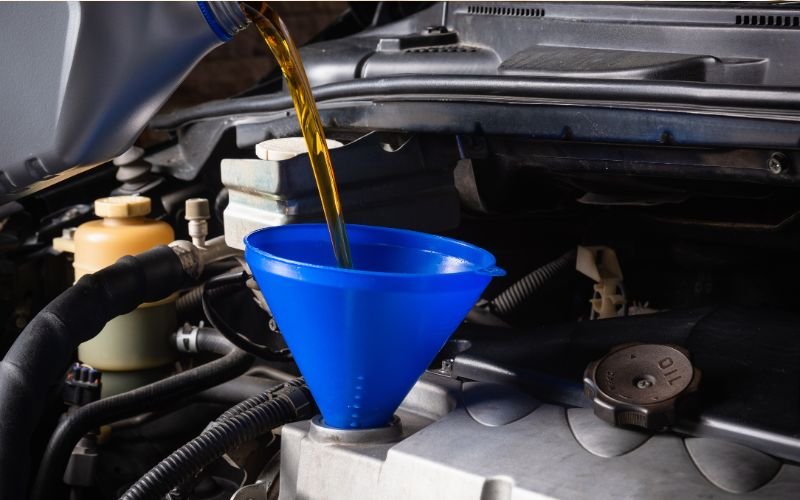Valvoline Oil Services Pricing, Types & Benefits
When it comes to keeping your engine clean, cool, and performing at its peak, getting your oil changed on time is not just a good idea; it is essential. But in today’s fast-paced world, drivers are searching for more than just a fluid swap. They want quick service, quality products, and a brand they can trust.
Across the U.S., many vehicle owners are turning to express service providers that specialize in high-quality lubricants and maintenance services. These brands offer drive-thru convenience, ASE-certified mechanics, and custom oil solutions for every type of engine, from high-mileage sedans to turbocharged SUVs.
In this comprehensive guide, we will cover the benefits of regular oil changes, how they improve fuel efficiency, what’s included in a professional oil service package, the typical cost, and how to determine whether to opt for full synthetic, conventional, or high-mileage blends. We will even break down how it compares to DIY changes, explore the best time intervals, and share some money-saving tips that every car owner should know.
Why Regular Valvoline Oil Changes Are Crucial for Your Car
Changing your engine oil is one of the simplest, yet most impactful, maintenance tasks you can do for your vehicle. Let’s break down exactly why it matters.
What Engine Oil Does:
- Lubricates engine components
- Reduces friction and overheating
- Cleans internal contaminants
- Protects against rust and sludge buildup
- Improves fuel economy and horsepower
When oil becomes old or contaminated, it loses its viscosity and ability to protect your engine. That’s when wear and tear accelerate, and your car may begin to run hotter, noisier, or even consume more fuel.
What’s Included in a Professional Oil Change Service
A certified oil service includes far more than just draining the old oil. Here’s what a full-service package often provides:
| Service Feature | Description |
| Engine oil replacement | Using synthetic, blend, or conventional oil based on vehicle specs |
| New oil filter | High-quality filter for removing dirt and debris |
| Fluid top-offs | Coolant, transmission, washer, and brake fluids checked |
| Tire check | Air pressure and wear were examined |
| Visual inspection | Belts, hoses, lights, and wipers inspected |
| Service reset | Dashboard indicator lights recalibrated |
Some service centers also offer complimentary vacuuming, windshield cleaning, or even free car health reports.
Choosing the Right Type of Engine Oil
Each vehicle has its own lubrication needs, so choosing the right oil type is key to performance and longevity.
Conventional Oil:
- Great for older engines or basic use
- Lower cost but shorter intervals (3,000;5,000 miles)
Synthetic Oil:
- Ideal for high-performance engines or extreme climates
- Longer lasting and superior protection (7,500;10,000+ miles)
High-Mileage Oil:
- Specially formulated for engines with 75,000+ miles
- Helps reduce oil leaks and consumption
Synthetic Blend:
- A hybrid of conventional and synthetic
- Good balance of cost and performance
Always consult your vehicle’s manufacturer’s guide or let a certified technician recommend the best formula.
Express Service Experience: What to Expect
If you have never used a drive-thru oil service center, here’s what the process usually looks like:
- Pull Up & Stay in Car: A technician greets you at the bay. No appointment needed.
- Vehicle Info & History: They will review your mileage and prior service data.
- Oil Type Selection: You will choose a plan: conventional, blend, or synthetic.
- Service in 15 Minutes: Fluids drained and replaced, filter swapped, tires checked.
- Results Review: You will get a printed summary of the services performed.
- Drive Away: The whole process is designed to take less than 20 minutes.
This contactless, stay-in-your-car format has become especially popular for its convenience and speed.
Cost Breakdown: What You Might Pay
Prices can vary depending on your location, vehicle type, and oil selected. Here’s a rough guide:
| Service | Typical Price Range |
| Conventional Oil | $39.99 ; $49.99 |
| Synthetic Blend | $59.99 ; $69.99 |
| Full Synthetic | $79.99 ; $99.99 |
| High Mileage | $69.99 ; $89.99 |
Tips to Save:
- Use online coupons or mobile apps
- Sign up for maintenance packages
- Check for fleet or student discounts
- Join rewards programs for future service credits

How It Compares to Other Oil Change Providers
There are a number of players in the quick-lube and express maintenance industry. Here’s a brief comparison:
| Brand | Service Time | Oil Options | Price Range | Perks |
| Jiffy Lube | 15;30 mins | Synthetic, Blend | $49;$99 | Car wash, vacuum |
| Firestone | 20;40 mins | All types | $45;$105 | Nationwide warranty |
| Pep Boys | 30;45 mins | All types | $39;$109 | Appointment only |
| Local Shops | Varies | Varies | Varies | Personalized service |
While some providers offer more amenities, many drivers prefer the speed, convenience, and reputation of a name-brand express service.
Pros and Cons of Professional Oil Services
Let’s weigh the advantages and possible drawbacks:
Pros:
- Fast turnaround (as little as 15 minutes)
- Professional-grade motor oil
- ASE-certified technicians
- Free maintenance checks
- No appointment required
Cons:
- Slightly higher cost vs DIY
- May upsell unnecessary services
- Not all locations offer the same service consistency
DIY Oil Change vs Express Service
If you’re mechanically inclined, doing it yourself can be a satisfying, cost-effective option. Here’s how they compare:
| Factor | DIY | Express Service |
| Cost | $25–$45 | $39–$99 |
| Time | 45–60 mins | 15–20 mins |
| Equipment Needed | Jack, pan, gloves | None |
| Clean-up | Required | None |
| Skill Level | Moderate | None needed |
If time, mess, or tools are an issue, professional service may be the better option.
When Should You Get an Oil Change?
How often you need service depends on your driving habits and oil type:
- Every 3,000;5,000 miles for conventional oil
- Every 6,000;8,000 miles for blends
- Up to 10,000+ miles for full synthetic
Also consider:
- Extreme temperatures
- Frequent short trips
- Towing or heavy loads
Many modern vehicles have a dashboard reminder light that monitors engine performance and alerts you when oil life is low.
Signs Your Car Needs Oil Service
Watch for these symptoms:
- Dark, gritty oil on the dipstick
- The engine is running louder or hotter
- Dashboard oil light illuminated
- Decreased fuel efficiency
- Unusual engine ticking sounds
Do not wait; delayed service can lead to long-term engine damage.
Eco-Friendly Oil Disposal & Recycling
A responsible service provider ensures used oil is recycled properly. Each oil change can generate up to 5 quarts of waste oil, which is hazardous if disposed of improperly.
Ask if your provider:
- Follows EPA recycling guidelines
- Uses eco-certified disposal services
- Offers refined or reprocessed oil options
This commitment to the environment is part of what sets trusted service centers apart.
Final Thoughts
A properly maintained engine runs better, lasts longer, and saves you money in the long run. Whether you’re driving a compact commuter car or a full-size SUV, staying on top of routine maintenance, like oil changes, is one of the smartest investments you can make in your vehicle’s health.
If you are looking for a fast, reliable, and trusted provider, choose a brand known for quality, certified technicians, and customer-focused service.
After all, keeping your engine happy means fewer breakdowns, smoother rides, and peace of mind every mile you drive.
FAQs
Can I bring my oil or filter?
Some centers allow this, but many recommend using their inventory for warranty tracking.
What happens if I skip an oil change?
Old oil breaks down and can damage your engine, increase fuel consumption, and void warranties.
How do I know which oil is best?
Check your vehicle manual or ask a certified technician. They’ll recommend based on age, mileage, and performance.
Is full synthetic oil worth the price?
Yes, especially for modern engines, extreme weather, or long intervals between changes.
Do I need to change oil every 3,000 miles?
Not always. Modern oils and engines may allow longer intervals. Use your manufacturer’s schedule.
Citation:
Wikipedia contributors. (n.d.). Valvoline Instant Oil Change. Wikipedia. https://en.wikipedia.org/wiki/Valvoline_Instant_Oil_Change







